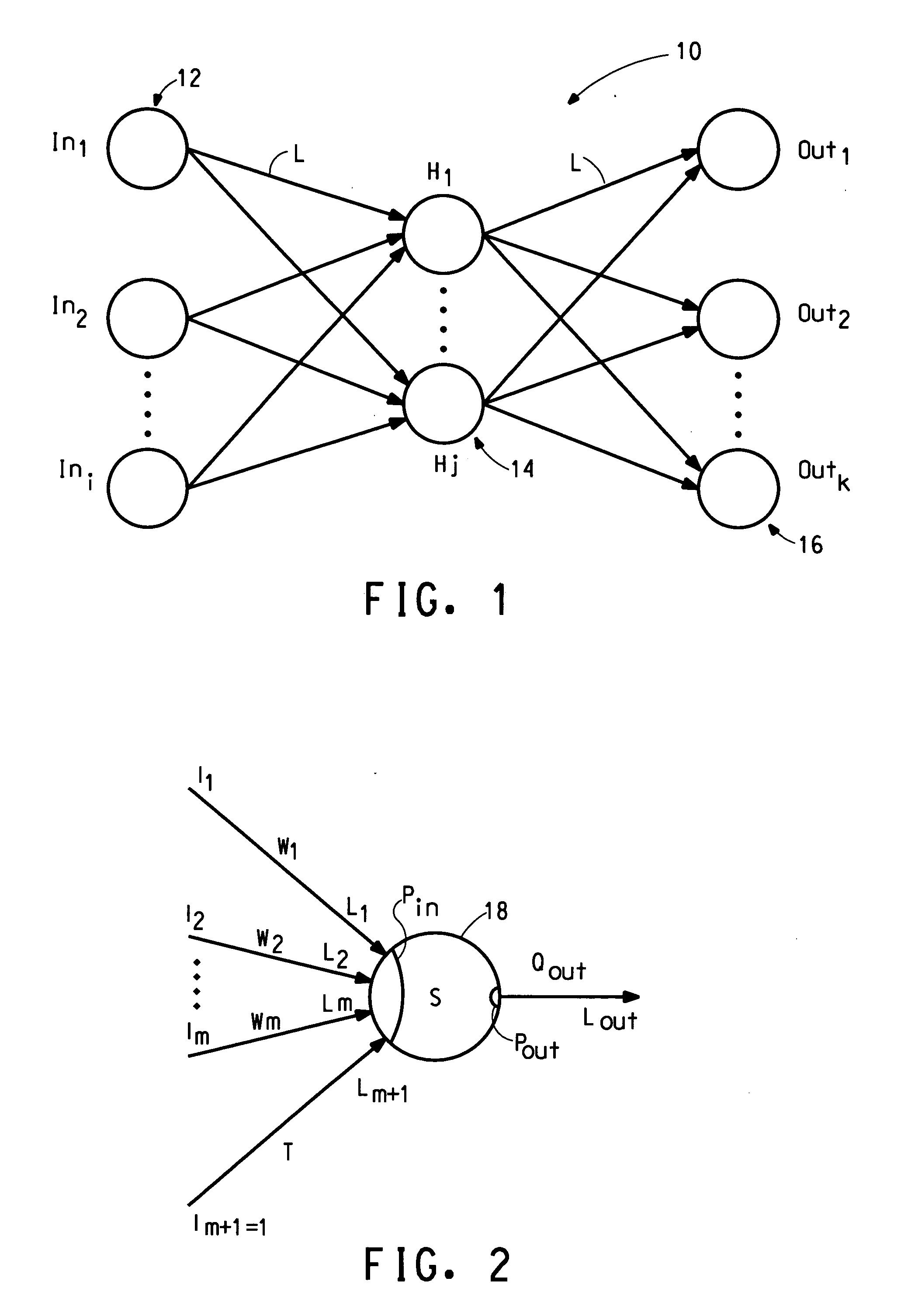Method and apparatus for predicting properties of a chemical mixture
- Summary
- Abstract
- Description
- Claims
- Application Information
AI Technical Summary
Benefits of technology
Problems solved by technology
Method used
Image
Examples
example 1
[0046] Neural networks were developed to predict the relationship between coatings formulations and substrate hiding in automotive collision repair coatings systems. Four collision repair coatings systems coded A, B, C, D were used. All four systems are intermix systems of single pigment tint and binder components that can be combined to make a wide variety of colors to match an automotive color being repaired. Systems A and C are used for repair of solid automotive colors and systems B and D are used to repair automotive colors containing metallic or pearlescent flakes. We denote the latter type of colors as effect colors. The coating mixture to be used for a repair is defined by a formula indicating the mass amounts of the components to make a customary volume of the liquid coating. For example the formula component amounts in grams to make a gallon volume could be used. The property to be predicted is the film thickness required to eliminate the visual contrast of the color over ...
example 2
[0052] A collection of about 3300 solid colors was developed in a coatings intermix system for the heavy-duty truck fleet market. There was desire to provide property estimates for the color formulas in this special collection. The properties of interest included black and white hiding, viscosity, appearance, orange peel and sag. Measurements of these properties are described under Test Methods.
[0053] The formulas and property measurement data were taken from the first 1213 color formula developments. These data include a small number of calibration samples at or near the masstone formula for single tints with appropriate balancing binder additions. The remainder were actual process formulas. Property measurements for 100 color formulas were repeated to estimate the replication error of the property measurements. At the time the data was extracted some of the property data was incomplete so that between 1088 and 1200 exemplars were available for the various property measurements.
[...
PUM
| Property | Measurement | Unit |
|---|---|---|
| Weight | aaaaa | aaaaa |
| Color | aaaaa | aaaaa |
| Viscosity | aaaaa | aaaaa |
Abstract
Description
Claims
Application Information
 Login to View More
Login to View More - R&D
- Intellectual Property
- Life Sciences
- Materials
- Tech Scout
- Unparalleled Data Quality
- Higher Quality Content
- 60% Fewer Hallucinations
Browse by: Latest US Patents, China's latest patents, Technical Efficacy Thesaurus, Application Domain, Technology Topic, Popular Technical Reports.
© 2025 PatSnap. All rights reserved.Legal|Privacy policy|Modern Slavery Act Transparency Statement|Sitemap|About US| Contact US: help@patsnap.com



